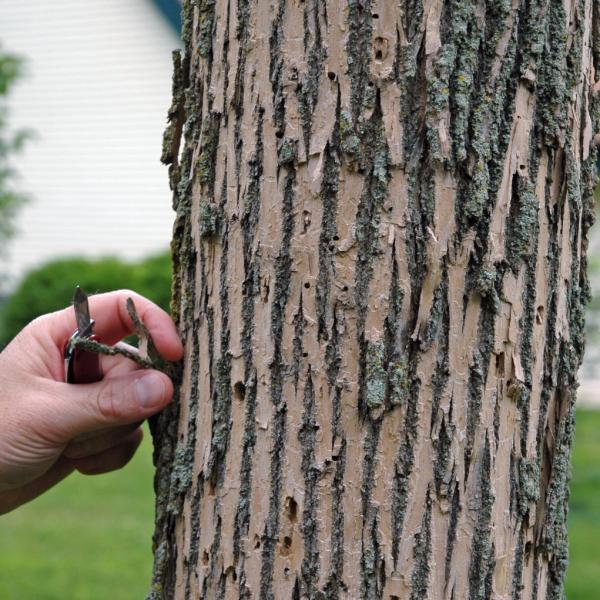
November 2025
Emerald ash borer (EAB) is now established in many parts of Vermont, and communities across the state are seeing the impacts—especially declining or dying ash trees. Without intervention, EAB will kill the vast majority of ash. However, when detected early, there are effective ways to protect individual trees.
Depending on the stage of infestation and whether you’re managing ash on private property, public land, or in forested areas, your management options will vary. The resources below can help guide your next steps.
NEW! Recent executive order allows the movement of EAB-infested ash logs and firewood within a single infested town and between adjacent infested towns during the EAB flight season (June 1 - September 30). During the non-flight season, movement through un-infested towns is allowed if the ash logs and firewood are being transported directly to a destination within an infested town and there are no other stops within that or any other un-infested town, and the ash logs and firewood will be received and stored at the destination within the infested town. For more information read the entire Joint Order Regarding the Movement of Ash Wood Infested with EAB.
Know Where EAB Has Been Found
- Vermont tracks emerald ash borer presence and infestation severity using a statewide map that is regularly updated by state agencies and partners. View interactive map.
- View list of municipalities where infestations have been confirmed.
If emerald ash borer has recently arrived in your area
- Learn how to identify signs and symptoms of EAB, such as canopy thinning, bark splitting, woodpecker damage, and D-shaped exit holes.
- Review the Homeowner’s Guide to Emerald Ash Borer to help determine whether to treat, remove, or monitor your ash trees.
- Consult with a certified arborist to assess tree health and treatment options. View Ash Tree Protection Services Contact List, updated May 2025.
- Dead or dying ash trees become brittle and hazardous quickly. If your tree is in decline, removal should be done as soon as possible by a professional with experience handling ash.
If emerald ash borer is well established
Dead or dying ash trees become brittle and hazardous quickly. If your tree is in decline, removal should be done as soon as possible by a professional with experience handling ash.
If you are managing a forest area
Forest management should focus on mitigating potential effects of emerald ash borer, supporting long-term forest health, and promoting structural and species diversity.
- Ash Management Guidance for Forest Managers
- 10 Recommendations For Managing Ash in the Face of EAB & Climate Change
Guidance for municipalities
Municipalities play a central role in responding to EAB, especially when it comes to public safety, long-term budgeting, and maintaining healthy urban forests. The Vermont Urban & Community Forestry Program offers a range of tools to support local planning and management.
Slow the Spread
- Don’t move firewood. Ash wood can be used locally for firewood, but transporting it—even short distances—can spread emerald ash borer and other pests. Always follow Vermont’s firewood rules and any quarantine requirements. Check out the don’t move firewood campaign.
- Follow Slow the Spread recommendations. Carefully planning and managing the movement of infested or potentially infested material will slow the spread and provide greater protection for uninfested forests. Review slow the spread recommendations.
- Stay informed about the June 1 – Sept. 30 EAB Flight Season, when adult insects emerge from infested ash trees and are on the move seeking new host trees.
Looking ahead
- Vermont is part of an effort to introduce biological control agents—tiny parasitoid wasps that prey on emerald ash borer and may help reduce populations over time. Read more about biological control efforts.
- Researchers are also working to identify and propagate ash trees with natural resistance to emerald ash borer, offering hope for the long-term recovery of ash in our forests and communities. Learn more about Monitoring and Managing Ash
- Black ash holds deep cultural and ecological value in Vermont. For generations, Abenaki communities and other Indigenous peoples have relied on black ash for traditional basketry, storytelling, and ceremony. Since hosting a UVM graduate student, the Vermont Urban & Community Forestry Program has continued to support outreach, field walks, and relationship-building in collaboration with Vermont Forests, Parks & Recreation, Abenaki basket makers, and educators. Together, we are working to raise awareness, support community-led efforts, and further research around black ash and its future in Vermont’s landscapes. Learn more about the Black Ash Project.